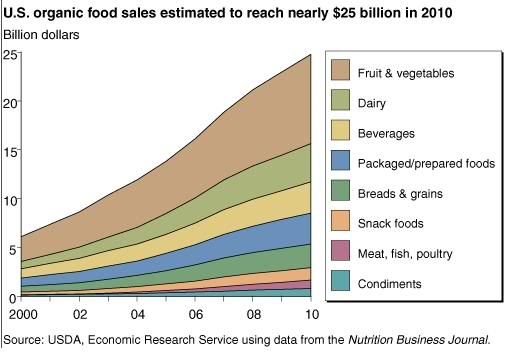
Once available only in natural product stores and farmers’ markets, organic foods are now found in conventional supermarkets, value-priced big-box chains, and an expanding array of direct-to-consumer markets. U.S. organic food sales are expected to reach $25 billion in 2010, up from $3.6 billion in 1997. Organic products accounted for over 3.5 percent of food sold for at-home consumption in 2009. Produce and dairy products accounted for over half of organic food sales in 2009, followed by soymilk and other beverages, packaged foods, breads/grains, snack foods, condiments, and meat. Sales of other organic products (including herbal supplements, personal care products, flowers, linens, and clothing) started from a smaller base but are growing even faster than total organic food sales. (source: usda)